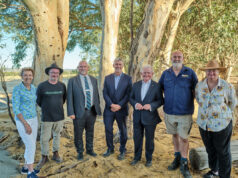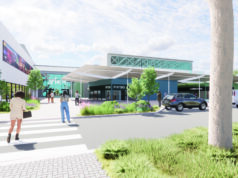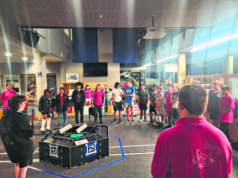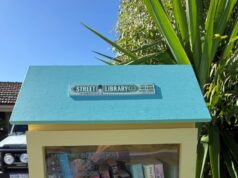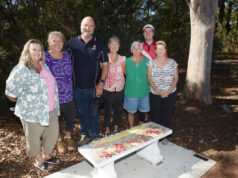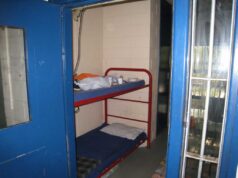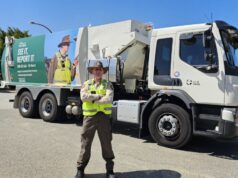Construction of the National Broadband Network is streaming ahead in Perth’s south east as more and more residents and business owners make the switch from ADSL to NBN every day.
The eastern portion of the City of Canning including Cannington and Queens Park has had access to the network for several months.
For 6,000 Armadale and surrounds premises the network was switched on in December and the rest are expected to have it by the end of the year as construction continues.
Just before Christmas, sections of Forrestdale, Mount Nasura and Armadale were switched on as well as remaining areas of Piara Waters and Harrisdale.
Examiner Newspapers has teamed up with Curtin University information systems expert Vidyasagar Potdar to answer some frequently asked questions about Australia’s largest ever infrastructure project.
What is the NBN?
NBN stands for National Broadband Network. In simple words it is a technology that will offer faster Internet access to Australians. This technology uses fibre optics as a medium to transmit information. Fibre optics uses light to transfer information, which is why it is very fast as information travels at the speed of light.
What was the old network?
The old network was predominantly made of copper wires and is mostly privately owned by Telstra and some other telcos. If you were using ADSL internet connection or dial up internet connection (in the past), you were on the old copper based network.
What is the difference between copper wiring and fibre?
Copper wiring was used in the past and is still used in many places. Both copper and fibre allow data transmission, which is required when accessing the Internet. There are three main differences when we compare the two and they are how far the information can travel, how much data can be transferred at one time and how reliable the transfer is.
Copper wiring falls short on all the three points when compared to fibre optic cables. Fibre optic cables can carry data much longer, it can carry much more data at a time and it is much more reliable then copper.
Why do we need the NBN?
NBN will provide extremely fast Internet access with speeds of up to 100Mbps now and up to 1,000Mbps in the future. Downloading, uploading, online streaming, online gaming, online TV and using multiple devices will be extremely fast.
Such high speed internet will provide new opportunities to collaborate, manage business and conduct several business activities online. People can study at home by attending lectures in an online mode and interact with the lecturer using skype or any other online video software. People living in remote areas can access healthcare services or interact with doctors in an online environment.
Information on the internet is also getting larger and larger year by year, for example file sizes of movies in 4K definition, which will soon become the new standard, are about four times greater than 1080p high definition movies. This increase in file size requires faster internet to stream or download to your computer or internet connected device.
What is the difference between Fibre to the Node, Fibre to the Premises, satellite and mixed use?
FTTP: This will be the fastest of the NBN service that you can experience because in this mode the fibre optic cable will come all the way through to your home.
FTTN: In this mode NBN uses a mix of fibre optic cables and traditional copper cables. The node in FTTN refers to a NBN box (usually dark green), which will be installed at a road intersection. So the internet will come via fibre optic cables to this node and from there it will use the traditional copper cable already in the ground to connect to your home. This means you will experience lower speeds compared to FTTP type of NBN.
Most Australians will receive NBN through one of these two modes. A small group of people may receive NBN either via Fixed Wireless or Satellite.
Fixed wireless: is when you connect to NBN via a fixed antenna fixed to your roof. This is for those usually in more rural areas who cannot be connected via FTTN or FTTP.
Satellite: is the last option where you will have a dish on your roof that will connect to NBN via the satellite.
What speeds can I expect on the different technologies?
Download speeds are normally advertised as ‘up to’ i.e. ‘up to 12Mbps’, 25 Mbps, 50 Mbps, 100 Mbps on fibre optic.
ADSL 2+ can offer speeds up to 20Mbps downloads and up to 820Kbps upload. ADSL can offer speeds up to 8Mbps downloads and up to 384Kbps upload.
One thing that is sometimes confusing to people is when we say 12Mbps people think that a 12MB file can be downloaded in one second, but that is not true. There is a difference between Mbps and MBps, the former is the unit of speed at which data transfers, where as the latter is the size of storage.
Hence when we say a song is 12MB in size it does not mean it will take one second to download on a 12Mbps speed. Mbps is 1/8th of MBps.
So: 12 Mbps download (=1.5MBps) and 1 Mbps Upload (=125 kBps). 25 Mbps Download (=3.125MBps) and 5 Mbps Upload (=625 kBps)
What speeds will be available on them in 10 years time?
We can expect to see speeds of up to 1,000 to 10,000 Mbps in 10 to 15 years time.
What can impact my speed/reliability?
If you are using WiFi you will find the speed slower compared to using a wire (LAN cable) to connect to the Internet. However other than laptops or desktops you cannot connect LAN cables to mobile devices.
Your computer or laptops wireless card may or may not support high speed or your router is not NBN compatible. There can also be issues surrounding infrastructure and the age of the equipment you’re using.
Speed also depends upon which NBN plan you choose. Most of the vendors advertise plans with the following download speeds: 12Mbps, 25 Mbps, 50 Mbps and 100 Mbps
Why is the NBN such a politically divisive issue?
In my opinion it is because of the scale of investment and the number of times the cost projections have been wrong.
Why is it taking so long to roll out?
There are many reasons why it is taking longer to roll out. For example all the contracts have to be renegotiated especially with Telstra. There is a technology mix with the use of FTTN and the new IT systems have to be reconfigured to support new technology mix.
How do you connect to the NBN/how do I know what technology I have available?
There will be a NBN box that will be installed at your home or business and you can then connect your WiFi modem to the NBN box and you will get access to NBN. You will still need to contact a telco to connect your home to the internet.
You can check the availability of NBN by entering your street address on the following link: http://www.nbnco.com.au/connect-home-or-business/check-your-address.html
You can check a list of telcos and the availability of NBN by entering your street address on the following link: http://www.nbnco.com.au/connect-home-or-business/check-your-address.html
If you have any more NBN questions we haven’t answered email editorial@examinernewspapers.com.au and we’ll update the list.
According to the NBN Co over the coming months a further 19,000 premises in Byford, Bedfordale, Brookdale, Cardup, Darling Downs, Haynes, Hilbert, Mount Richon, Wungong, and Seville Grove and remaining parts of Armadale, Mount Nasura and Forrestdale will continue switching on.
Many City of Gosnells suburbs including Huntingdale and Maddington were expected to have access to the network by the start of 2019.



